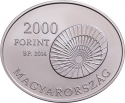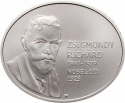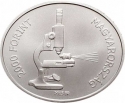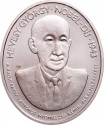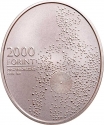You are about to finish your registration. Please check your mailbox (including spam folder). There should be a letter with a confirmation link. Check setting to make sure that your e-mail address is correct.
Send letter againDescription
Richard Adolf Zsigmondy (1865-1929) was an Austrian chemist of Hungarian descent who won the Nobel Prize in Chemistry in 1925 for his pioneering work in colloid chemistry.
Zsigmondy showed an early interest in physics and chemistry. He studied at the University of Vienna under Professor E. Ludwig and later at the Technical University of Vienna. In 1887, he moved to Munich to study organic chemistry under Professor W. von Miller. He earned his doctorate in 1890 with a dissertation on indene derivatives. Subsequently, he worked with physicist Professor Kundt in Berlin, where he began researching colloidal gold sols.
In 1893, Zsigmondy became a private lecturer at the Technical University of Graz, focusing on ruby glass. From 1897 to 1907, he lectured at the University of Jena and collaborated with Schott Glassworks. During this period, he continued his research on colloidal gold sols, discovering that their color depended on the degree of dispersion and explaining phenomena like Cassius purple.
In 1913, Zsigmondy improved his ultramicroscope and determined the number of particles per unit volume. He studied the stability of dispersive systems, the chemical composition of micelles, and gels, and introduced the concept of the gold number to measure protective colloids' efficacy. He invented the membrane filter in 1918 and the ultrafilter in 1929, capable of separating particles the size of bacteria.
Zsigmondy was awarded the Nobel Prize for demonstrating the heterogeneous nature of colloidal solutions and inventing the ultramicroscope. He donated his Nobel Prize money to the development of the University of Göttingen and later published his research with his son-in-law's assistance.
Engraver: Fanni Király
Obverse

|
Depicts a portrait of Richard Zsigmondy. On the right side, in horizontal rows beneath each other, the inscriptions "ZSIGMONDY," "RICHÁRD," the birth and death years "1865-1929," "NOBEL PRIZE," and "1925" are readable. At the bottom edge, next to the portrait, the engraver's privy mark is placed. ZSIGMONDY |
|---|---|
Reverse

|
Depicts an ultramicroscope receiving incoming rays of light from the side. Below the depiction, the issuance year "2015" and the mintmark "BP" are visible. Around the edge, in a semicircular inscription, the denomination and the word "FORINT" can be seen, while on the right side, the inscription "HUNGARY" is present. 5000 FORINT |
| Edge |
5000 Forint
Hungarian Nobel Prize Winners
Richard Adolf Zsigmondy
Subscribe series
Adamo# EM294
Hungarian Nobel Prize Winners
Richard Adolf Zsigmondy



